1417 - Workers' Compensation Liability Between Departments (Historical View)
** Effective: 9/18/2017 2:42:35 PM - 1/5/2018 4:11:00 PM **Status: Active
Change Notes
Authority updated: updated to new master agreement
Category
Benefits and Insurance
Audience List
- Health and Safety Officers
- Personnel Officers
- Personnel Transactions Supervisors
- Return-to-Work Coordinators
Synopsis
These guidelines apply to claims where there is a question regarding which state agency is liable for workers’ compensation benefits for an industrial injury or illness.
Introduction
The workers' compensation system provides benefits to employees for work-related injuries or illnesses. These benefits may include medical treatment, payments for lost wages, payments that compensate the injured employee for having a permanent impairment or limitation, vouchers to pay for retraining, and death benefits.
All state employees are covered by workers' compensation. The cost of this protection is paid by the State of California, the employer. Workers’ compensation benefits are tax free and are not subject to Social Security deductions.
The California Department of Human Resources’ (CalHR) Workers’ Compensation Program manages the state’s Master Agreement with State Compensation Insurance Fund (State Fund) to provide workers' compensation claims processing and legal representation for all the participating departments. The Master Agreement is an Interagency Agreement. Not all State of California agencies, departments, boards, and commissions are participants in the Master Agreement. Some have opted to purchase an insurance policy from State Fund to cover the risks inherent to the workers’ compensation system.
Statement
These guidelines apply to claims where there is a question regarding which state agency is liable for workers’ compensation benefits for an industrial injury or illness. These guidelines are only for legally uninsured state agencies under the Master Agreement for workers’ compensation services.
This commonly occurs when there are two or more distinct, but potentially overlapping, injuries with different state agencies; a single continuous trauma claim where two or more state agencies are potentially liable; or a subsequent injury with a different state agency.
Determining Liability
- When the issue of liability requires a medical determination, a physician must apportion between the agencies. This may be the treating physician(s), a Qualified Medical Evaluator (QME) or an Agreed Medical Evaluator (AME), depending on the circumstances. The goal is to avoid multiple, competing medical legal reports. When a QME or an AME is needed to address other issues, the adjusters will collaborate on the selection of the evaluator who will be asked to address apportionment between the agencies. The request to apportion between the state agencies will be made in a straightforward, neutral manner and not advocate for a particular outcome.
- If two or more injuries are filed simultaneously, all of the appropriate information should be submitted to the physician(s) along with a letter asking for their determination.
- If a subsequent injury is filed, we should attempt, where possible, to use the services of the existing physician(s) to determine compensability on the new claim.
- If a continuous trauma claim is filed, all of the appropriate information should be submitted to the physician(s) along with a letter asking the physician to address the continuous trauma period and the contribution from each agency.
- When there is a factual dispute, the agencies should gather any pertinent information independently to determine if there was any potential exposure and provide it to their claims adjuster.
Paying Benefits
IDL: Paid by the current employing agency regardless of the source of the injury.
Medical Bills, Temporary Disability, and Permanent Disability: When a distinct determination can be made with regards to liability for a medical bill or disability benefits, it should be paid on that claim.
When a determination cannot be made and there is an accepted claim, process benefits on the accepted claim. If there is more than one accepted claim or if none of the claims are accepted, process payments on the most recent claim. Money may need to be moved between claims once a determination is made.
Application
Not Applicable.Authorities
Resources
PML
- PML 2011-009: PML 2011-009 - 3/22/2011 - Workers’ Compensation - Liability Determinations Between Uninsured State Agencies
Related Policies
- 1412: Industrial Disability Leave
- 1414: Temporary Disability
- 1415: Workers' Compensation
- 1416: Workers' Compensation Administrative Time Off
Authorized By
Ralph Cobb
Chief (Acting),
Benefits Division
Contact Person
Tracy Caldwell
Worker's Compensation Program Advisor,
, Workers' Compensation
Phone: 916-445-9760
Fax: 916-324-3213
Email: tracy.caldwell@calhr.ca.gov
